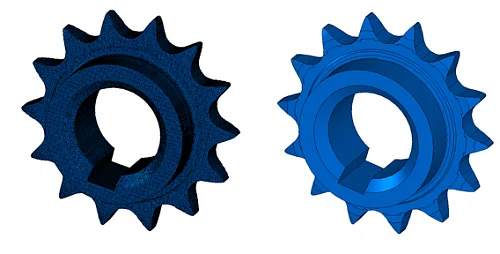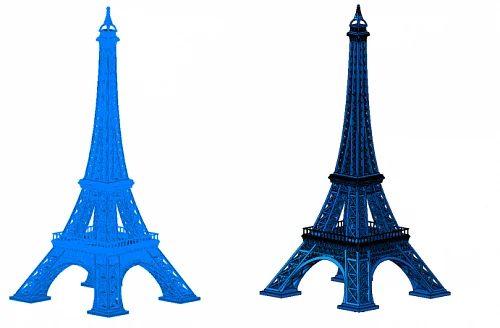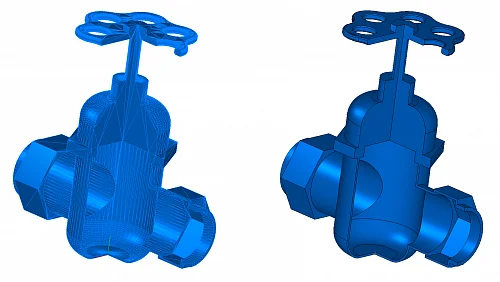Proprietary Math
C3D B-Shaper uses our unique algorithm to subdivide meshes into subsets that are then converted into faces. Subsets are recognized as either elementary surfaces (plane, cylinder, cone, sphere, torus) or free surfaces (NURBS). The module generates intersection curves between adjacent subsets, which then become body edges.




